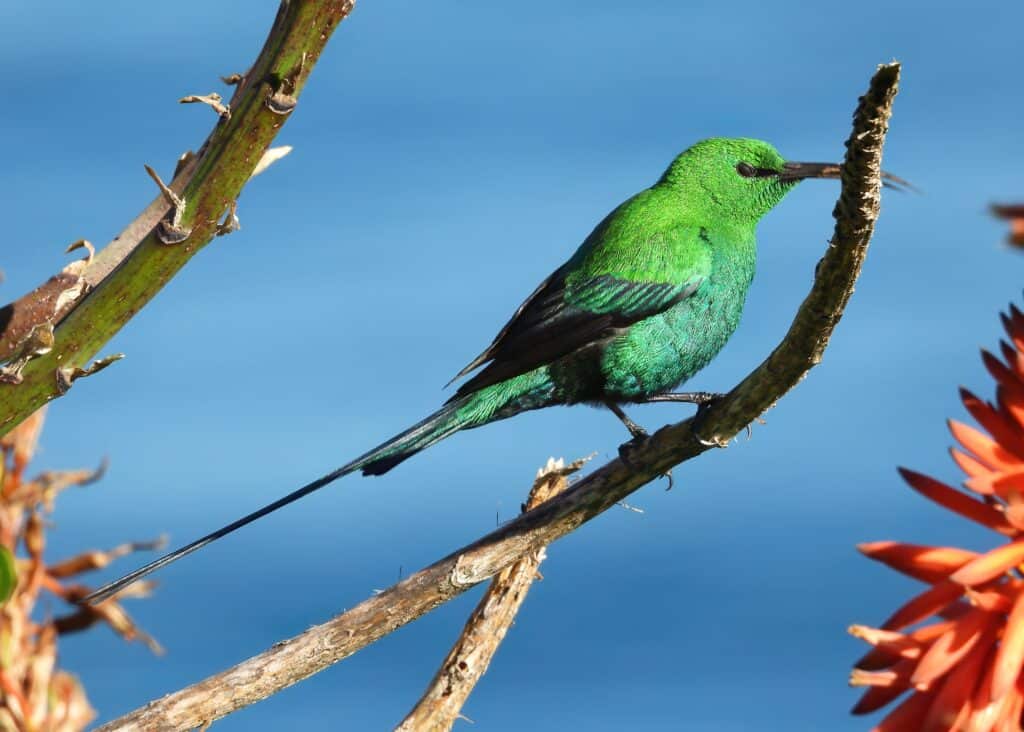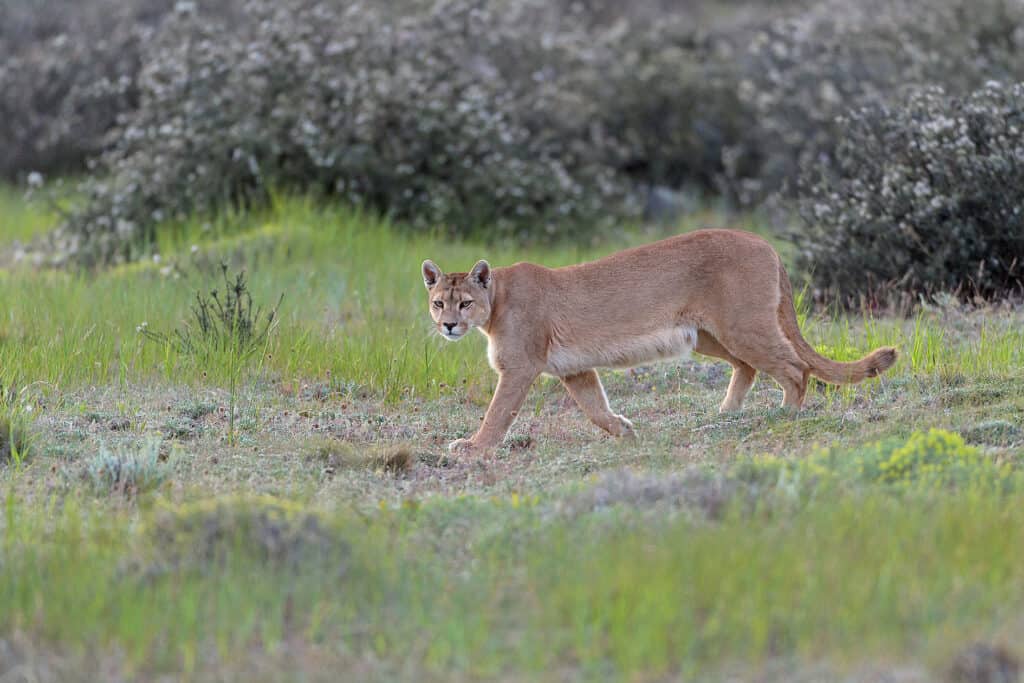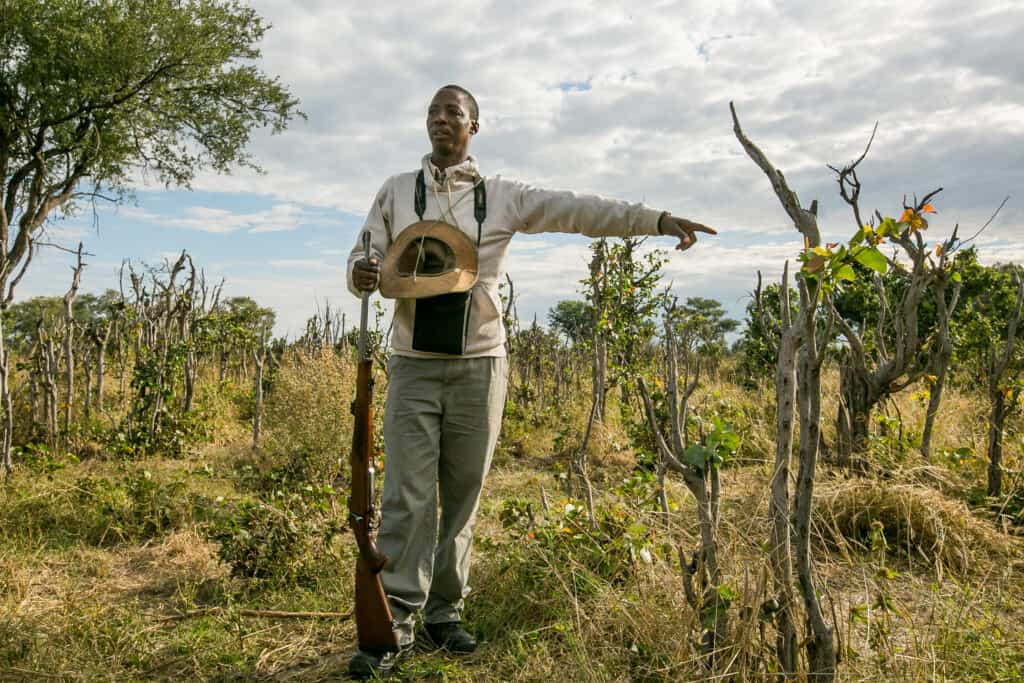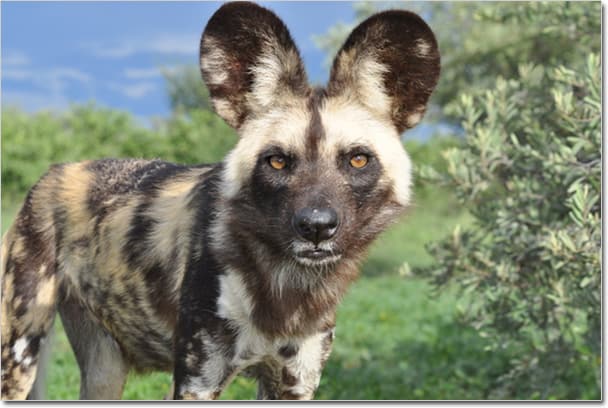Namibia
Sossusvlei to Skeleton Coast: Soaring Dunes and Desolate Beauty
Namibia is a unique destination with special wildlife sightings, dramatic scenery, diverse cultures, remote wilderness, adventure activities, and one of the lowest population densities in the world. You can view traditional safari species in Namibia and also spot desert-adapted elephants or go on a walking safari in search of black rhino. Other highlights include the Namib Desert (one of the oldest deserts in the world), Sossusvlei’s breathtaking sand dunes, and the remote and untamed Skeleton Coast.
Namibia’s semi-desert climate means that days are warm or hot and nights are typically cool. While more rain falls at the start of the year, the country typically receives minimal rain throughout the rest of the year.
Many travelers chose to combine a visit to Namibia with a short, traditional safari in Botswana or South Africa. This allows them to take advantage of Namibia’s unique activities and sights while still optimizing game viewing.
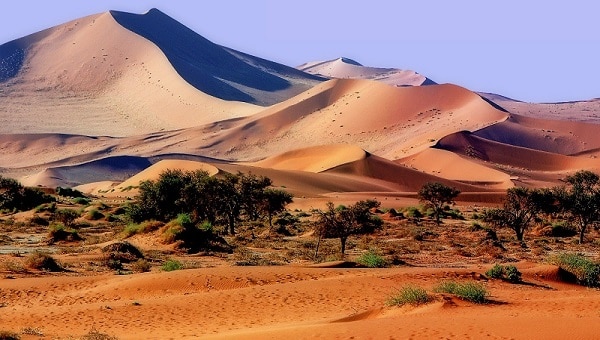
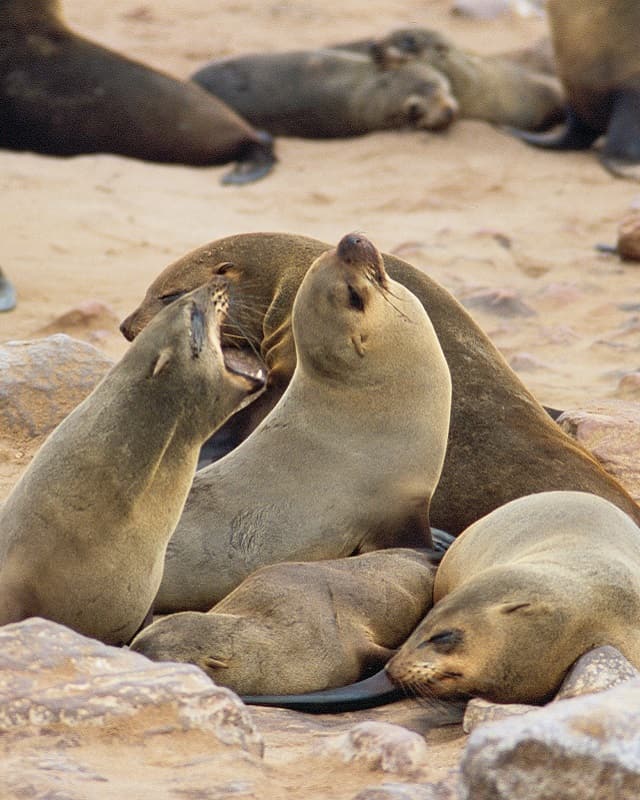
Namibia Sample Safaris
Winter Birding in South Africa
Winter birding in South Africa is fantastic, with a wide variety of unique and colorful birds, many of which stay in South Africa year-round. Here are some of the birding hotspots that our Operations Specialist Judy enjoyed in June (Winter) within South Africa.
Wild Cats of Chile: A Puma Tracking Adventure (Small Group Trip 2025)
Explore Patagonia, the premiere wild puma destination, with a small group. In the Patagonia region of Chile there is a large population that has become visible. Hunting was banned here and the puma found sanctuary in the stunning Torres del Paine National Park. Over generations, sightings increased until reaching a point of becoming very reliable. There can be no guarantee of finding such wide-ranging and elusive cats, but a small handful of expert trackers have mastered the craft and are now finding puma almost daily.
Bushman’s Botswana
Return to the origins of humanity as you head deep into the heart of Botswana and the world-famous Okavango Delta and Kalahari Desert. Experience the Old Way of the Bushmen - the indigenous people of southern Africa.
Okavango Origins – Painted Dog Focus – Botswana Group Trip 2024
This one-of-a-kind small group safari features an exceptional Bushman Guide team from The Wild Source, as you visit an iconic location where African wild dogs have been featured in 2023 films by BBC (Planet Earth 3) and Disney Nature (Animals Up Close). We utilize an authentic mobile camp, the ultimate for safari purists. Here the experience is in dining under the stars while sharing stories around the fire, learning of Bushman culture through the oral tradition, and being connected to the bush and wildlife at all times. You will have a nice level of comfort but never forget your special surrounds!
Top Namibia Safari Locations
Namibia Safari Regions

Caprivi
Overview
Namibia consists of 13 regions. Of these, Caprivi is unique in that it is home to six ethnic tribes: the Subia, Yeyi, Mafwe, San, Tortela and Mbukushu. Amazingly, these six tribes have all adopted Lozi, a Zambian language, and English as a common means of communication.
The Caprivi regional capital is the town of Katima Mulilo, which is situated on the Zambezi River. There are no other major towns in the area, only numerous villages.
The Caprivi is ideal for travelers who desire a Botswana-type safari but do not have the budget for Botswana. The Caprivi is surrounded by four perennial rivers: the Chobe, Kwando, Linyanti, and Zambezi.
The Caprivi also is home to four national parks: Bwabwata, Mamili, Mudumu, and Mahango.
Location
The Caprivi makes up Namibia’s panhandle, or thumb. It is situated in the far northwest with the majority of it sandwiched between Botswana to the south and Angola to the north. The B8 Highway also makes for convenient access to and from Victoria Falls.
Wildlife
The waterfront areas attract over 600 species of birds, four of the big five (all except for rhino), large concentrations of elephant, and huge herds of antelope.
Best Times to Go
The best time to go to the Caprivi is between April and September as the game viewing is at its best and the weather is much cooler and drier. Plus, there is virtually no rain falling at this time.
However, if your prime focus is birding, then the summer months of October through March are better suited to witnessing the region’s influx of migratory birds. Be warned that the summer months are extremely hot with intense humidity.

Damaraland
Overview
Damaraland is one of the most scenic areas in all of Namibia. The area is huge, untamed, and ruggedly beautiful. Here there are prehistoric water courses intertwined with open grasslands, towering granite kopjes, and deep gorges.
Further west, the geography changes considerably with sandy wastes that sustain small populations of desert-adapted elephant, black rhino, desert lion, giraffe, ostrich, and springbok. Highlights of the area include Tweyfelfontein, the Brandberg, the petrified forest, and Vingerklip.
Location
Wildlife
In Damaraland, you can see giraffe, ostrich, and springbok, as well as desert lion and desert-adapted elephant. If you are very lucky, you may even spot black rhino.
Best Times to Go
The best time to go to Damaraland is during Namibia’s winter months of May through September. The temperatures are much cooler compared to the summer months of October through April when the temperatures are blistering hot.

Etosha National Park
Overview
Etosha National Park is part of the greater Kalahari Basin. The park is dominated by a massive mineral pan from which it derives its name, which roughly translates to “great white place.” The pan, covering approximately 25 percent of the park, is the largest in Africa. Originally formed around 100 million years ago, this massive pan formed a deep lake fed by the Kunene River until the river changed course thousands of years ago and the lake dried. The pan is now a large depression of salt and dusty clay. In recent years, the rains have been enough to fill the pan.
This temporary water in the Etosha Pan attracts thousands of birds, including flamingos. The perennial springs surrounding the pan attract large herds of zebra, springbok, elephant, lion, hyena, and leopard to just name a few.
Location
Guests can also enter the park via the eastern Von Lindequist Gate near Namutoni. King Nehale Gate is available for guests entering or exiting to the northeast and the newly opened western Galton Gate is currently only open for guests who have previously booked accommodation for Dolomite Camp.
Wildlife
It is possible to see many traditional safari species in Etosha, including four of the big five. In fact, Etosha boasts one of the healthiest populations of black rhino. Elephant and lion are fairly common sights. Leopards are present but more elusive. Other sightings might include hyena, jackal, honey badger, zebra, wildebeest, springbok, gemsbok, and more. The pan also attracts thousands of birds, representing hundreds of species, about a third of which are migratory. Species represented include flamingos, lilac-breasted rollers, and birds of prey.
Best Times to Go
The best time to go to Etosha National Park is in August and September as the game viewing is at its best, and the days are not blistering hot nor the nights extremely cold. During the summer months from October to April, expect it to be very hot. The winter months of May through September are cooler and, as a result, are a more popular time to visit.

Fish River Canyon
Overview
The canyon stretches 160km in length and up to 27km wide and nearly 550m deep. The towering rock faces and deep ravines carved out by water erosion were further formed by the collapse of the valley due to movements in the earth’s crust some 500 million years ago.
The Fish River is the longest river in Namibia, traveling over 800km from its beginnings in the Namib-Naukluft Mountains to its confluence with the Orange River only 110km east of its departure into the Atlantic Ocean. A multi-day backpacking trek through the canyon is a popular way to see all of these features up close and personal.
Location
Wildlife
Fish River Canyon is home to many species. You may see springbok, gemsbok, kudu, steenbok, Hartmann’s mountain zebra, or the diminutive klipspringer grazing here. Leopard, brown hyena, and bat-eared fox can be spotted as well. Additionally, 240 species of birds have been recorded in the area with species ranging from ostriches to eagles to lovebirds and everything in between.
Best Times to Go
The best time to go to Fish River Canyon is between the months of May and September when the winter is at its peak and the weather is comfortable. If you are planning on backpacking through the canyon, the hike can only be done from April to September due to extreme temperatures soaring past 40°C (104°F) in the summers and the possibility of flash floods during the rainy season.

Kalahari Desert
Overview
The Kalahari Desert stretches across seven countries: Namibia, Botswana, Zambia, South Africa, Angola, and the Democratic Republic of Congo. In Namibia, the only real reason it is called a desert is because its porous, sandy soil cannot retain surface water. In technical terms, it is not a true desert as some areas receive up to 250mm of rainfall.
The Namibian Kalahari Desert is covered with trees, ephemeral rivers, and fossil watercourses. There are no towering dunes here such as you will see in Sossusvlei. The reasonably regular rainfall during the summer months allows for large herds of antelope, birds, reptiles, and amphibians to thrive. It is also here the Bushmen call home.
Location
The Kalahari Desert covers one third of Namibia’s eastern side, as far north as Tsumkwe and as far south as the border with South Africa. With the exception of Windhoek’s Central Highlands, the desert is east of the B1 Highway.
Wildlife
In the Kalahari, you may see scattered herds of antelope as well as black-maned lion, cheetah, zebra, black-backed jackal, giraffe, ostrich, and warthog. Meerkat also thrive in the Kalahari.
Best Times to Go
The best time for Kalahari Desert safaris are between the months of April and September. During this time, the days are warm to hot and the nights cool to freezing.

Kaokoland
Overview
The biggest difference between Damaraland and Kaokoland is in terms of accessibility and infrastructure. While Damaraland is rather isolated, Kaokoland is even more so. Home to 16,000 people, 5,000 of which are Himba, Kaokoland has a population density of one person to every two square kilometers which is about a quarter of Namibia’s average.
Considered one of the last remaining wilderness areas in southern Africa, the Kaokoveld is a region of magnificent mountain scenery and the home of the semi-nomadic Himba people. The Kaokoveld is also a refuge for desert-adapted elephant, Hartmann’s Mountain zebra, black rhino, and giraffe.
Location
Kaokoland is bordered by two rivers: the Hoanib River in the south and the Kunene River to the north. The Kunene River also forms Namibia’s border with Angola.
Wildlife
Wildlife in Kaokoland is more scattered as the desert landscape cannot support huge numbers of animals. Possible sightings include desert-adapted elephant, Hartmann’s mountain zebra, black rhino, and giraffe. Nile crocodile and hippo can be found in the Keune River.
Best Times to Go
The best time to go to Kaokoland is between the months of April to September. During these months, the days are warm and the nights cool. From October through March the days are blistering hot with sporadic rain showers.

Skeleton Coast
Overview
The Skeleton Coast consists of sand dunes, canyons, and mountain ranges. The climate is equally diverse. Most days are categorized by dense fog and cold sea breezes created by the cold Benguela Current, which flows off the coast, north from Antarctica, and is met by the extreme heat of the Namib Desert.
Despite its arid and deadly appearance, the Skeleton Coast National Park is home to a variety of species. Desert-adapted elephant, black rhino, desert lion, cheetah, giraffe, gemsbok, Hartmann’s mountain zebra, springbok, and brown hyena can all be found around the dry river beds.
Location
The Skeleton Coast National Park stretches south from the Kunene River in the north, on the border with Angola, for approximately 500km to the Ugab River in the south. The park protects about one third of Namibia’s coastline.
Wildlife
The Skeleton Coast National Park is known for its huge colonies of cape-fur seals, which can be spotted along the coast. You can also see brown hyena, desert-adapted elephant, black rhino, desert lion, jackals, ostrich, giraffe, and cheetah in the park.
Best Times to Go
The best time to go to the Skeleton Coast is October – May. During this time, the days are warm with occasionally cold nights. Occasional rains may also occur during this time.
From May through September the coast is often blanketed in a thick mist from evening to mid-morning and with it comes strong westerly winds. Temperatures rarely drop below freezing but can still be rather cold.

Sossusvlei
Overview
The sand dunes of Sossusvlei in the Namib Desert are often referred to as the highest dunes in the world, with some soaring up to 300m. Sossusvlei is certainly one of Namibia’s most extraordinary sights, providing striking views by day and incredible stargazing by night. Located in the Namib Naukluft National Park, the park is one of the largest conservation areas in Africa and the fourth largest in the world, at nearly 50,000 square kilometers.
Location
Located in the southwest coastal region of Namibia, the sand dunes of Sossusvlei are approximately 60km from Sesriem Gate (the entrance to the park). The dunes are approximately an hour drive from Sesriem Gate. The gate into Sesriem opens at sunrise and closes promptly at sunset.
Wildlife
Much of the wildlife found here is specially adapted to life in the unforgiving desert. It is possible to spot the striking gemsbok (Namibia’s national animal) as well as springbok and even wild horses. You may also see ostrich, spotted hyena, brown hyena, black-backed jackal. Several nocturnal animals might be spotted in Sossusvlei as well, including aardvark if you are lucky.
Best Times to Go
The best times to go to Sossusvlei are March – May or August – October. The cooler air offers clearer skies (great conditions for photography), and temperatures are milder during both the day and night.

Swakopmund
Overview
Swakopmund lies between the two wilds of the Atlantic Ocean and the Namib Desert. It is one of the largest cities in Namibia, with a distinctive mix of Germanic and African influences. The area of the Namib Desert around Swakopmund is properly named the West Coast Recreational Area. Known as Namibia’s adventure capital, Swakopmund and the surrounding environment offers a plethora of opportunities to be active.
Whether you are interested in sandboarding, quad biking, hot air ballooning, deep sea fishing, or joining a Living Desert Tour, there is an activity to suit virtually every taste. For the more relaxed traveler, Swakopmund offers a fantastic selection of restaurants and cafes, plus an art gallery, museum, snake park, and aquarium.
Location
Swakopmund is located along the southern Atlantic coast surrounded by the Namib Desert. North of the port city of Walvis Bay, Swakopmund is approximately a four hour drive west from Windhoek along the B2 Highway.
Wildlife
While you can see seals and birds in this coastal town, the main draw here is not wildlife. More wildlife can be viewed in nearby Walvis Bay. Overall, Swakopmund offers a nice city complement to your time on safari in Nambia’s more wildlife-centric regions.
Best Times to Go
The best time to go to Swakopmund is between November and April. The cool Namibian coast offers relief from the blistering heat found throughout much of Namibia’s interior.

Waterberg
Overview
The Waterberg is a nature reserve consisting of the Waterberg Plateau and surrounding land. Watreberg means “water mountain.” This is an apt name for this 200m mountain, which typically has springs at its base, even during the dry season, thanks to its unique geology. The plateau serves as a conservation area for several of Namibia’s endangered species, including black and white rhino, sable, and blue wildebeest. These species are free from predators and poaching as the plateau is not easily accessible. Walking safaris and rhino tracking on foot are available.
Location
Wildlife
The Waterberg Nature Reserve offers one of the greatest diversity of species in Southern Africa. Rare species such as black rhino, white rhino, and sable can be seen here. Visitors even have the ability to track rhino on foot here. Other species of note include leopard, cheetah, hyena, jackals, Damara dik dik, blue wildebeest, zebra, and baboon to name a few. There are also nearly 200 bird species.
Best Times to Go
The best time to go to Waterberg is between the months of April and September. During these months the daytime temperatures are pleasant and the nights cool.

Windhoek
Overview
Namibia’s capital city sits at an altitude of 1,650m (5,280ft) in the middle of the central highlands in between a wide valley between bush-covered hills. Windhoek is small when compared with most cities in the developed world.
The majority of travelers will begin and end their Namibia safari here. Although Windhoek has many attractions, we recommend a quick overnight in the capital before heading out to the country’s other, more interesting highlights.
Location
Windhoek is located in a basin between the Khomas Highland and Auas and Eros Mountains, north of the Orange River and 360km west from the Atlantic coast.
The city is situated in almost the country’s center and has obvious benefits when it comes to beginning and ending a classic Namibian safari.
Wildlife
Despite being Namibia’s capital, wildlife is quite abundant in the areas surrounding Windhoek. Daan Viljoen Game Park, 25km west of Windhoek, along with many other nature reserves and guest farms surrounding the city collectively create a healthy habitat to support a variety of Namibia’s wildlife. You may see leopard, giraffe, bat-eared fox, zebra, kudu, and many species of both antelope and birds.
Best Times to Go
There really is no bad time to visit Windhoek. Its location in the Central Highlands allows for comfortable weather throughout most of the year.
During the months of October and November the temperatures peak and the days can get hot. From December through April, the days are hot with occasional heavy showers. From June through August, the temperatures range from comfortable during the day to freezing at night.
